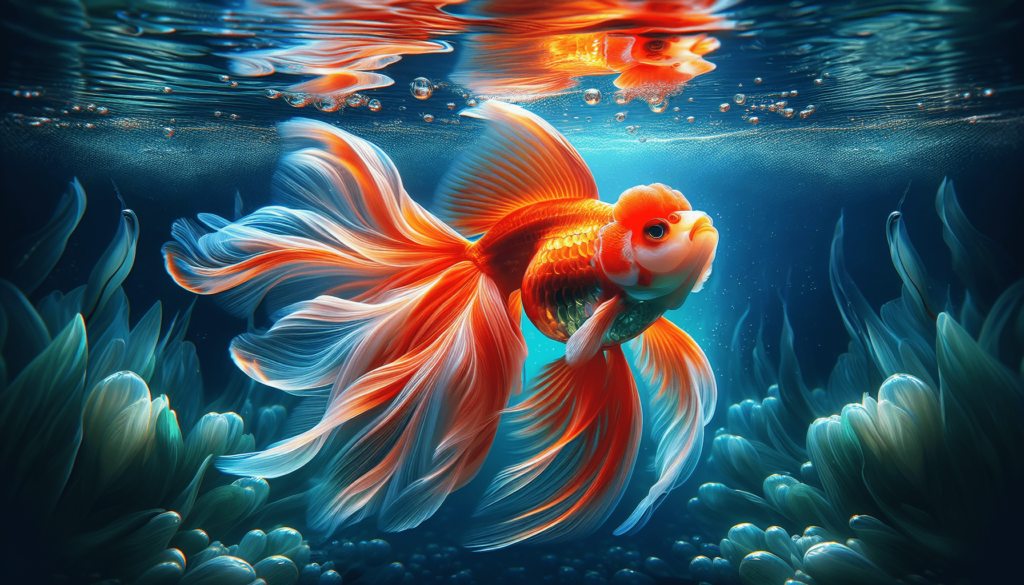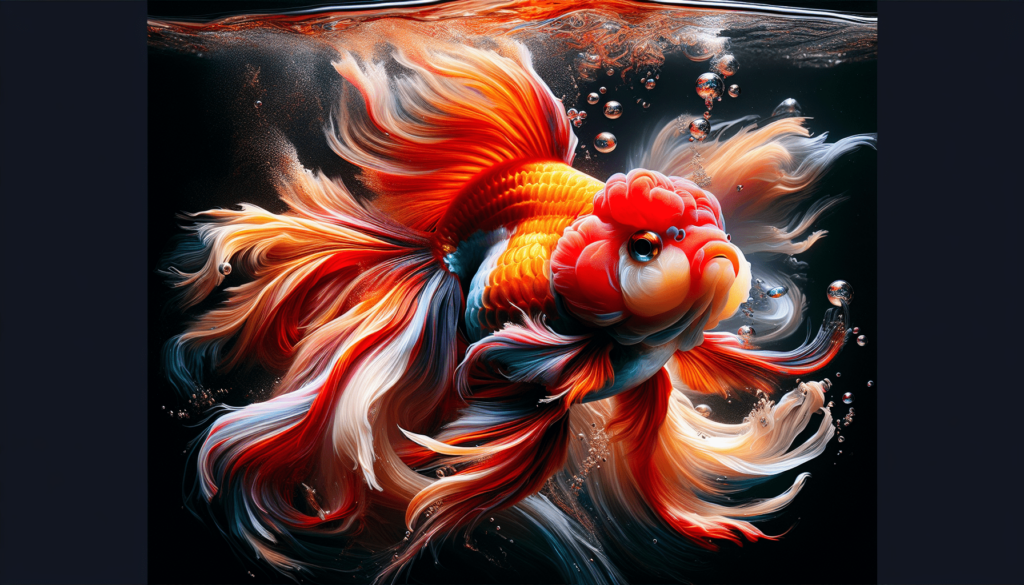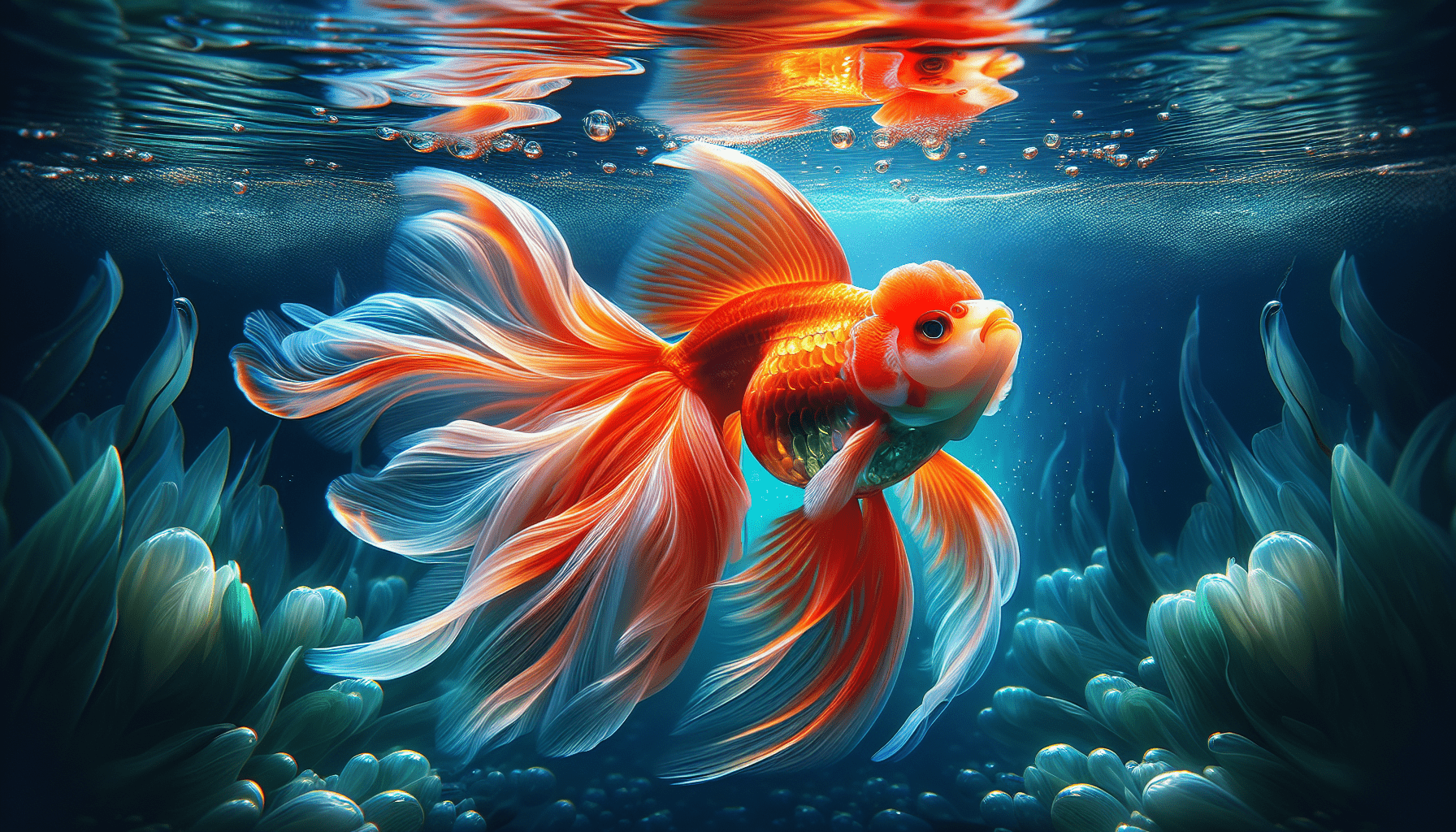Have you ever wondered if your goldfish really needs a filter? Many aquarium enthusiasts have debated this topic for years, but the answer is not as simple as a yes or no. Filters can provide numerous benefits to your goldfish, such as maintaining the water quality and removing harmful toxins, but they are not absolutely necessary in every situation. In this article, we will explore the importance of filters for goldfish tanks and discuss alternative methods of ensuring a healthy environment for your finned friend. So, let’s dive in and discover the truth behind goldfish and filters!

Introduction
If you’re a proud goldfish owner, you may have wondered whether or not your beloved pets need a filter in their tank. Well, the short answer is: Yes, they do! A filter is an essential component of any goldfish tank, and for good reason. In this comprehensive article, we’ll delve into the importance of having a filter for goldfish, explore the different types of filters available, discuss factors to consider when choosing a filter, guide you through the setup process, offer solutions to common filter problems, and even provide alternative options to traditional filters. By the end of this article, you’ll have all the knowledge you need to ensure optimal water quality and a healthy, thriving environment for your goldfish.
The Importance of a Filter for Goldfish
Maintaining Water Quality
One of the primary reasons why a filter is crucial for goldfish is its role in maintaining water quality. Goldfish are known for their prodigious appetites and their tendency to produce a significant amount of waste. Without proper filtration, their tank can quickly become a breeding ground for harmful ammonia, nitrites, and nitrates, which are byproducts of their waste. These toxins can be detrimental to your goldfish’s health, causing stress, illness, and even death. With a filter in place, however, these pollutants are efficiently removed, ensuring that the water remains clean, clear, and safe for your goldfish to thrive in.
Removing Waste and Toxins
In addition to the waste produced by goldfish, uneaten food, decaying plant matter, and other organic debris can accumulate in the tank. A filter helps to remove these suspended particles, preventing them from decomposing and releasing harmful toxins into the water. By removing waste and toxins, the filter not only enhances the water quality but also minimizes the risk of disease and improves the overall well-being of your goldfish.
Promoting Oxygenation and Circulation
Another crucial role of a filter in a goldfish tank is the promotion of oxygenation and circulation. Goldfish, like all aquatic creatures, rely on oxygen dissolved in the water to breathe. A filter helps to aerate the water by agitating the surface, allowing for maximum oxygen exchange. Additionally, the circulation created by the filter ensures that the water is evenly distributed throughout the tank, preventing stagnant areas and providing essential oxygen and nutrients to all corners of the aquarium.
Types of Filters for Goldfish
When it comes to choosing a filter for your goldfish tank, you’ll encounter several different types. Each type has its unique features and advantages, so it’s essential to understand them to make an informed decision.
Mechanical Filters
Mechanical filters, also known as foam or sponge filters, are widely popular among goldfish enthusiasts. They utilize a sponge or foam media to physically trap debris and waste particles as the water passes through. Mechanical filters are particularly effective at removing larger particles, such as uneaten food and plant matter, giving your goldfish tank a crystal-clear appearance. These filters are also gentle and safe for goldfish, making them an excellent choice for sensitive species.
Biological Filters
Biological filters, also referred to as biofilters, are designed to facilitate the growth of beneficial bacteria that aid in breaking down ammonia and nitrites into less harmful compounds. These filters typically consist of bio-media, such as ceramic rings or bio-balls, which provide ample surface area for bacteria colonization. Biological filters are an integral part of the nitrogen cycle, helping to maintain water quality and create a healthy environment for your goldfish.
Chemical Filters
chemical filters, as the name suggests, employ specific chemical media to remove impurities from the water. Activated carbon is a commonly used chemical media, capable of absorbing organic compounds, odors, and discoloration. While not as crucial as mechanical and biological filtration, chemical filters can be a beneficial addition to your goldfish tank, especially when addressing issues like water discoloration or odor.
Combined Filters
Combined filters, also known as multi-stage or comprehensive filters, incorporate elements of mechanical, biological, and chemical filtration into one unit. These filters offer the advantages of multiple filtration methods, ensuring thorough and efficient water purification. Many combined filters also come with additional features like adjustable flow rates and enhanced mechanical filtration capabilities, making them a popular choice among goldfish owners seeking optimal filtration performance.
Factors to Consider when Choosing a Filter
Choosing the right filter for your goldfish tank can be a daunting task, given the array of options available. However, by considering a few key factors, you can make a decision that best suits your fish’s needs and your own preferences.
Tank Size and Stocking Level
The size of your goldfish tank and the number of fish it houses will play a significant role in determining the appropriate filter. Larger tanks with more goldfish will require more robust filtration to handle the increased waste load. It’s generally recommended to have a filter with a turnover rate of at least four times the tank volume per hour. So, if you have a 30-gallon tank, you should aim for a filter with a minimum flow rate of 120 gallons per hour.
Filtration Capacity
Consider the filtration capacity of different filters and how it aligns with the needs of your goldfish. Filters are usually rated based on the size of the tank they can effectively filter, known as their gallon per hour (GPH) capacity. It’s important to choose a filter that can handle the waste produced by your goldfish and maintain excellent water quality within the recommended parameters.
Maintenance Requirements
Each type of filter has its maintenance requirements, so it’s essential to consider the time and effort you’re willing to invest in filter upkeep. Mechanical filters typically require regular cleaning to prevent clogging and maintain optimal performance. Biological filters need time to establish beneficial bacteria colonies and might require occasional rinsing to remove debris. Chemical filters often require media replacement at specific intervals. Be sure to choose a filter that aligns with your maintenance preferences and schedule.
Noise Level
Another factor to consider when selecting a filter for your goldfish tank is the noise level it produces. Some filters can be quite noisy, especially when the water cascades back into the tank or when the motor runs. If noise is a concern for you, look for filters with features like adjustable flow rates or ones specifically designed to operate quietly. You want to ensure a peaceful and enjoyable environment for both you and your goldfish.

Setting up a Filter for Goldfish
Now that you’ve chosen the ideal filter for your goldfish tank, it’s time to set it up correctly to maximize its effectiveness and efficiency.
Determining Filter Size
Before installing the filter, determine the appropriate size based on your tank’s volume. As mentioned earlier, the filter’s flow rate should ideally be four times the tank volume per hour. Additionally, consider the type of filter media required and ensure you have enough space in the filter for proper installation.
Installation and Placement
Most filters come with clear installation instructions, so carefully follow the manufacturer’s guidelines. Ensure that the filter is securely attached to the back or side of the tank, allowing it to hang over the water. Position the filter intakes in an area with the most debris and waste accumulation, such as near the bottom of the tank. This placement will maximize the filter’s effectiveness in removing unwanted particles.
Priming and Running the Filter
Some filters require priming to remove air trapped inside and establish water flow. To prime the filter, follow the manufacturer’s instructions. Once primed, turn on the filter and monitor its operation to ensure proper function. Allow the filter to run for a few hours to ensure it is providing adequate filtration before introducing your goldfish to their newly enhanced environment.
Common Filter Problems and Solutions
While filters are generally reliable and efficient, occasional issues may arise. Here are some common problems you might encounter with your goldfish tank’s filter and their solutions:
Clogging and Flow Interruptions
Over time, debris can accumulate in the filter, leading to clogs and reduced water flow. To solve this problem, regularly clean the filter media according to the manufacturer’s instructions. Rinse or replace the filter media as needed to maintain optimal performance. Additionally, avoid overfeeding your goldfish, as uneaten food can quickly clog the filter. Remove any excess food to prevent clogs and maintain water clarity.
Excessive Noise
If your filter becomes noisy, it could be due to a loose part or an incorrect installation. Double-check that all components are securely in place. Sometimes, vibrations from the filter against the tank glass can cause noise. Placing a rubber pad or foam between the filter and the tank can help absorb these vibrations and reduce noise levels. If the noise persists, contact the manufacturer for further guidance.
Leaks and Malfunctions
Leaks are a less common but potentially serious problem with filters. Check for any visible signs of leaks, such as dripping or wet areas around the filter. Ensure that all connections are tightly sealed and that the filter is properly installed. If you notice a leak, immediately disconnect the filter and address the issue before continuing to use it. If the filter malfunctions in any way, consider contacting the manufacturer for support or, if within warranty, a potential replacement.
Alternatives to Traditional Filters
While traditional filters are highly effective, there are alternative options that may suit specific situations or preferences. Here are a few alternatives to consider:
Sponge Filters
Sponge filters, as mentioned earlier, can be a standalone filtration system or used in combination with other filters. They provide excellent mechanical and biological filtration while generating minimal water flow, making them ideal for tanks with delicate or slow-swimming goldfish species. Sponge filters are also cost-effective and relatively easy to maintain.
Undergravel Filters
Undergravel filters are placed beneath a layer of substrate in the tank. These filters create a natural flow of water through the gravel, allowing beneficial bacteria to thrive and break down waste. Undergravel filters are a good choice for goldfish tanks with a thick substrate layer, and they can provide efficient biological filtration. However, they may not be suitable for tanks with live plants, as the filter’s suction can disturb the plant roots.
Vegetation and Live Plants
A natural alternative to traditional filters is to incorporate vegetation and live plants into your goldfish tank. Plants help absorb excess nutrients, produce oxygen, and provide hiding places for your goldfish. They can contribute to the overall health and balance of the tank, creating a more natural and aesthetically pleasing environment. However, the filtration capacity of plants may not be sufficient for heavily stocked goldfish tanks, so combining plants with a filter is usually recommended.
Maintaining and Cleaning the Filter
To ensure your filter continues to function optimally, regular maintenance and cleaning are essential.
Regular Filter Maintenance
Regular maintenance involves checking the filter’s performance, cleaning the intake and outflow pipes, and inspecting the filter media for debris buildup. Follow the manufacturer’s guidelines on how often to perform maintenance, but a general rule of thumb is to clean the filter approximately once a month. However, in heavily stocked tanks or those with excessive waste, more frequent maintenance may be necessary.
Changing or Cleaning Filter Media
Different types of filter media have varying lifespans and cleaning requirements. Mechanical media like sponges or foams may need to be rinsed or replaced more frequently than biological media, such as ceramic rings. Chemical media, such as activated carbon, typically needs replacement at regular intervals to maintain effectiveness. Follow the manufacturer’s instructions for each type of filter media to determine the appropriate cleaning or replacement schedule.
Replacing Filter Parts
Over time, filter parts may wear out or become damaged and require replacement. This could include impellers, seals, or motor components. It’s essential to purchase replacement parts from the same manufacturer to ensure compatibility. Keep an eye out for any signs of wear or malfunctioning components, and promptly replace any necessary parts to avoid potential problems with your filter.
Conclusion
In conclusion, a filter is indispensable when it comes to providing a healthy and vibrant environment for your goldfish. By maintaining water quality, removing waste and toxins, and promoting oxygenation and circulation, a filter plays a crucial role in your goldfish’s well-being. With the variety of filter types available, considering factors like tank size, filtration capacity, maintenance requirements, and noise level will help you choose the most appropriate filter for your specific needs. By properly setting up, maintaining, and troubleshooting your filter, you can ensure its optimal performance and enjoy a thriving goldfish tank for years to come. Remember, a happy and healthy goldfish starts with a clean and well-filtered environment!
